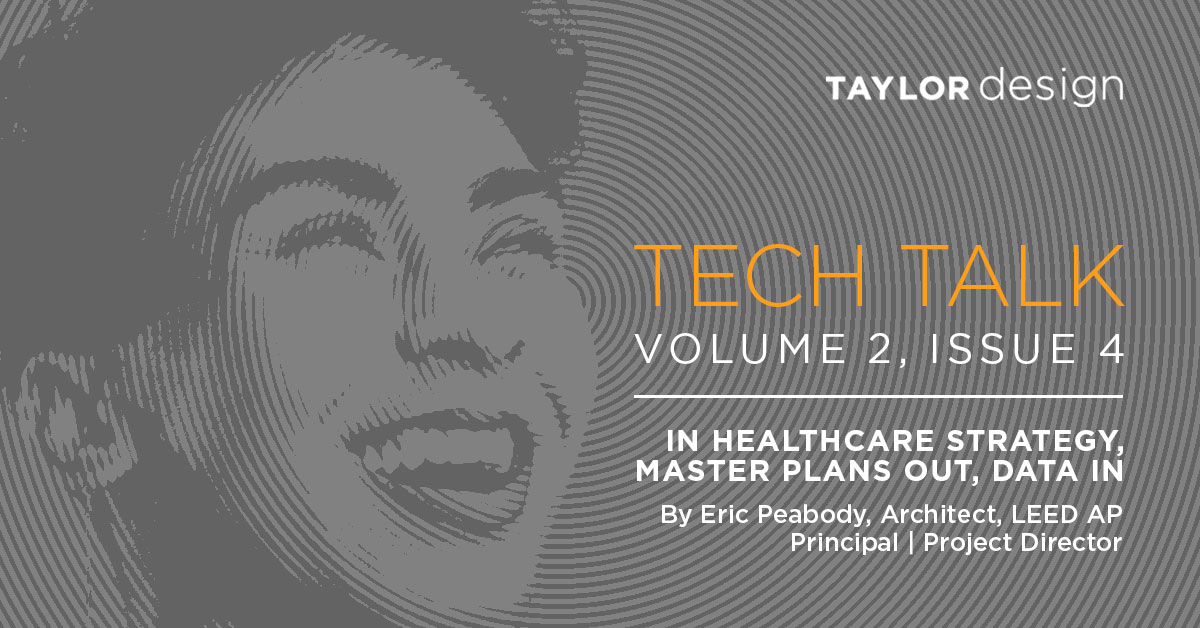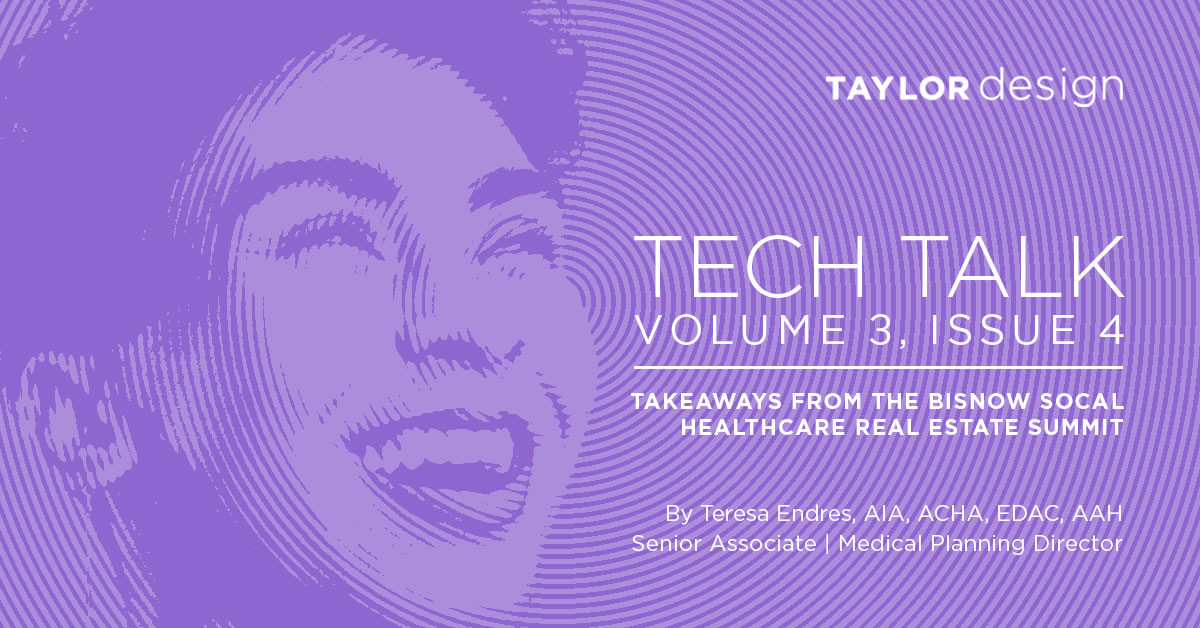Tech Talk: In Healthcare Strategy, Master Plans Are Out, Data In
By Eric Peabody, Principal | Project Director
The future of healthcare facility design is less about comprehensive, top-down campus master plans and more about layers of smaller, nimbler service-line master plans bolstered by comprehensive, sound data. This was a central point in my appearance on a Bisnow panel last month.
We also discussed the trend toward converting smaller conventional offices into medical office buildings to alleviate the shortage of suitable space. Earlier panelists spoke about the tight supply of institutional office space, and indeed we are doing a lot of work test-fitting office buildings and seeing what it takes to convert them from office use to medical office. You find yourself upgrading the buildings from a Type 3 construction to a Type 2 construction, which often means pulling the whole skin so you can fireproof the structural system.
Here are a few additional takeaways from the Bisnow event:
- Rethink the Master Plan. Healthcare providers benefit from rejecting the traditional master-planning process as too cumbersome. Instead focus on smaller, service-line master plans that support the enterprise strategic plan. This approach allows for flexibility to adjust the real estate strategy through time without invalidating the rest of the master planning work.
- Data Informs Strategy. To devise an informed service-line strategic plan, healthcare providers need access to reliable, relevant data. For example, healthcare systems can better formulate a strategy if they combine an analysis of market growth data with historic facility demand. This way, they can forecast future needs based on operational factors, including location, technology, workforce, demographics and so on.
- Data Covers Many Bases. By considering a multitude of intersecting factors, healthcare providers can assess strategic goals with an approach more traditionally associated with a real estate portfolio. For instance, by placing services closer to where patients live, a healthcare provider can reduce the need for vehicle miles traveled for access, decreasing carbon emissions.
- Respond to Change. To succeed in the current healthcare environment, providers need to make data-informed decisions. All aspects of their approach must accommodate future flexibility because as trends, needs and technology change over time, providers must adapt to meet demand where it is, not where they wanted or hoped it would be.
- Looking forward. Service lines in healthcare become more complex and specialized all the time. For this reason, providers must accommodate the changes in service, both operationally and structurally in their facilities. By developing a comprehensive portfolio of strategic plans that work in unison, healthcare providers can deliver the highest levels of care to their patients and best meet the needs of staff and others in the healthcare services spectrum.
My panel at Bisnow’s Northern California healthcare event was titled “Innovating & Future Proofing Healthcare Facilities: Focusing on Sustainability, Technology When Developing, Building & Designing.” I appreciate the opportunity to share the panel with James Goldberg of One Medical, Baris Lostuvali of Pankow, and Raj Daswani of Arup, with Scott Mackey of Devenney Group moderating.







